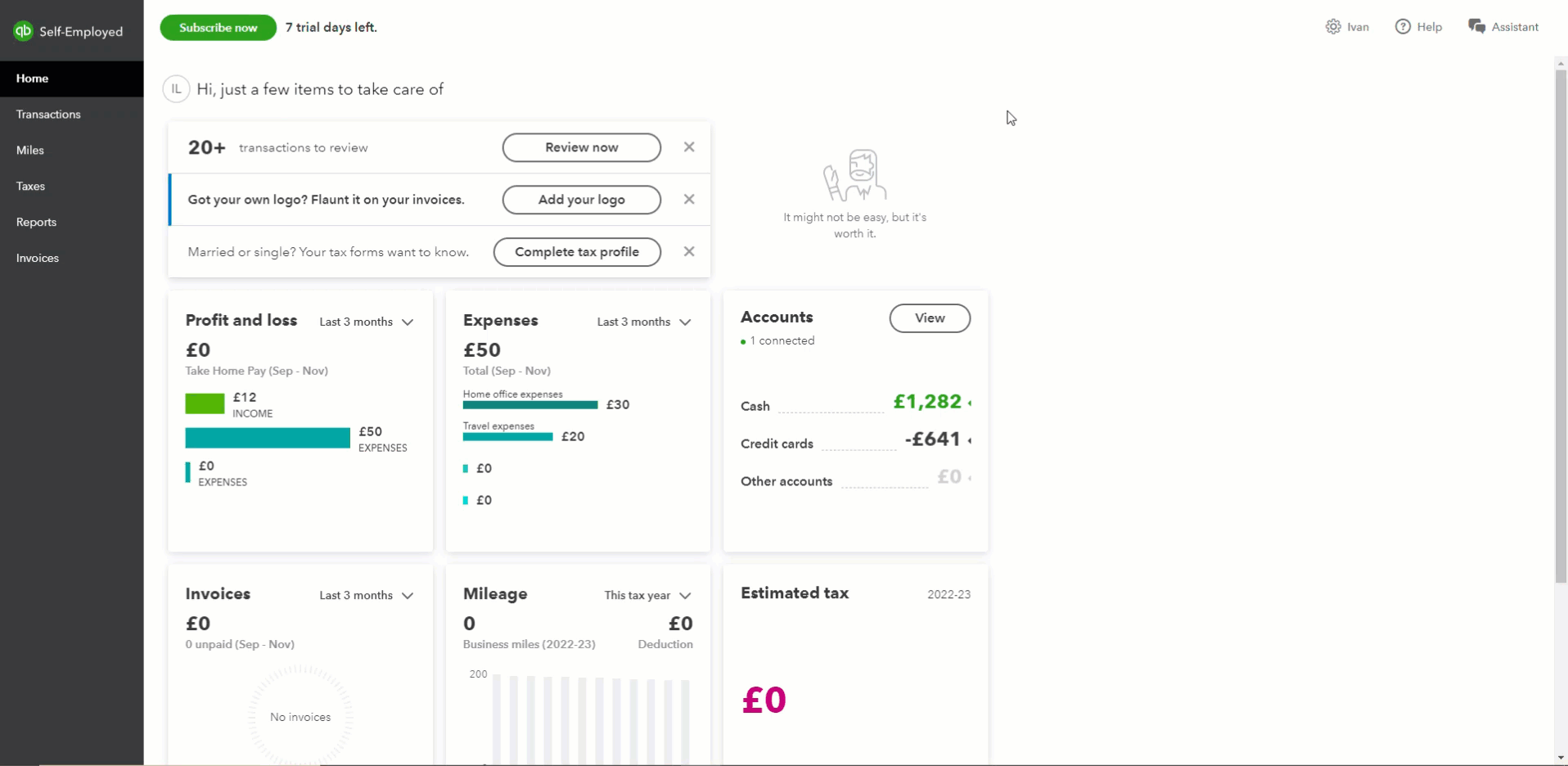Set up your tax profile in QuickBooks Self-Employed
by Intuit•3• Updated 1 year ago
By providing information about your business income, spending and allowable expenses, QuickBooks can calculate your self-employment taxes.
Follow these steps to set up your tax profile:

- Select the ⚙️gear icon.
- Select Tax profile.
- Select the tax year from the dropdown.
- Select your marital status.
- Enter your personal allowance amount. This is the tax-free portion of your income. It can be bigger (Marriage Allowance, Blind Person's Allowance) or smaller (income over £100,000). You shouldn't change the amount unless you know your allowance is different.
- Enter your estimated employment income.
Note: You can use your P60 at the end of the tax year, a P45, or calucate it manually. Remember to exclude any self-employment income. - Enter all your other income (for example, rental income) and other non-self-employment income.
- If you work from home, enter the number of hours you work from home each month.
- If applicable, enter your tax liability for the previous tax year.
- If your self-employment work started after 5 April of the tax year, select Yes.
- Select Save.
Your taxes are only calculated at the start of your self-employment date. Transactions before this date won't show in your Tax summary.
Sign in now for personalized help
See articles customized for your product and join our large community of QuickBooks users.